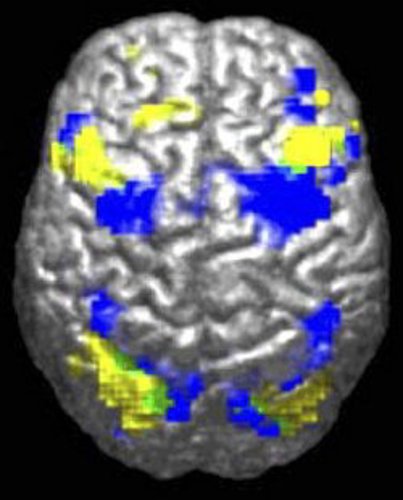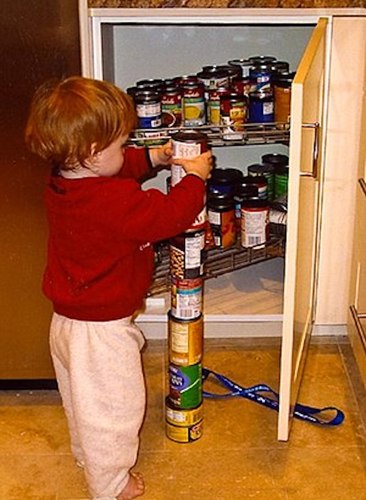
How can one identical twin have autism while the other doesn’t?
July 30, 2014

- Related Topics:
- Autism,
- Neurodiversity,
- Complex traits,
- Environmental influence,
- Twins
A curious adult from Australia asks:
"I was wanting to ask a question about ASD. One of my friends has identical male twins with only one of them being diagnosed on the Autistic spectrum. Her 2 year old daughter has also been recently diagnosed to be on the autistic spectrum. There is no history of autism on either the maternal or paternal side of the family. Firstly, how is it possible that genetics would be responsible if in the set of identical twins only one child has autism? Is it possible that germline mutations occurred due to environmental factors?"
You raise an interesting question. If a disease is genetic, you might expect that when one identical twin has it, the other always will too. After all, they share the exact same set of genes.
So if only one identical twin has a disease, then it must not be completely caused by our genes. Often, this means the environment also plays a role.
Scientists can learn about the factors behind a disease from families such as your friend’s. For autism spectrum disorder (ASD), the latest studies say that about half of the cause is genetic and half is environmental. So, both are important factors!
Some small environmental difference could have been what caused only one identical twin to develop ASD. In other words, one twin was exposed to something that triggered the disorder but the other wasn’t.
Occasionally, however, there might be an alternative explanation. Which gets us to the second part of your question.
Sometimes a disease can pop up out of nowhere in a family because of a new mutation in the “right” bit of DNA. These mutations can happen due to environmental factors. And, if that mutation happens in a sperm or egg cell (germline cells), it can be passed down. There are reports of ASD being caused this way.

This can result in children with ASD even though it doesn’t run in either family. However, a germline mutation by itself can’t explain your friend’s twins. They happen before a fertilized egg splits into identical twins. So, both twins would have the same mutation.
However, other types of mutations are also possible during development. For example, a change could happen right after an egg splits into identical twins. In this case, only one twin would have the mutation. If the bit of DNA that was changed was important for ASD, it could cause only one twin to get the disorder.
As you can see, there are several possible explanations for the complex pattern of ASD in your friend’s children. Different environmental triggers or mutations could have played a role. Or, it could always just be a random chance because of how the parent’s genes interact.
For the rest of the answer I’ll focus on what ASD is and why it is so hard to study. I’ll go a bit into both the genetics of it and how the environment might be involved.
The Complex Genetics of ASD
ASD is a surprisingly common disability. It occurs in almost 1 out of every 100 people! Curiously, boys are about 4 times more likely to have it than girls.
It alters how brain cells talk to each other, which changes how the brain functions as a whole. People with ASD have a variety of symptoms, but they usually have difficulty with social interactions and communication.
As its full name implies, ASD can look very different. No two people have exactly the same symptoms. Some people have mild effects, while others have severe ones.
Just as there is not one type of ASD, there is no one underlying cause. The genetics are very complicated.

Scientists guess that as many as 1,000 different genes1 could be related to ASD! These genes are called autism risk genes and are mostly important for brain functioning.
Usually just having one risky gene version (allele) isn’t enough to cause ASD. You need more than one gene to be the risky version. And, the more risky versions you have, the higher the risk. These genes are passed down from parent to child, so the risk is passed down as well.
With so many genes involved, many combinations are possible. This creates a wide range of possible symptoms. And also makes figuring out the genetics of ASD very difficult.
You can think of ASD like a soup, with genes as our ingredients. Different ingredients can be used to make different flavored soups. Similarly, different combinations of autism risk genes interact to make different types of autism.
Environmental Factors
As I mentioned before, genes can react differently to different environments. A gene might only cause a problem in response to a certain environmental trigger. People with the same gene but no trigger will not develop the disease.
Most ASD is caused by a combination of genes and the environment. As you might expect, the environment during pregnancy plays an important role. After all, that is when the brain is developing. Even though identical twins grow in the same womb, there can be small environmental differences.
Think about your soup again. The exact same ingredients can be cooked in different ways to make different tasting dishes. In a similar way, only one identical twin can get ASD, even though they have the same genetic ingredients. One twin’s brain environment may trigger ASD. But, the other twin’s environment could be different enough to not trigger the identical set of genes.
Scientists don’t know all of the environmental triggers, but they have identified a handful. These include things like problems during pregnancy, contact with certain chemicals, or the mom getting sick. And, there are probably plenty more!
None of these triggers is enough to cause ASD on its own. Each only increases the risk of getting it when paired with the “right” set of autism risk genes.
Scientists don’t know exactly how the environment controls a gene. A good guess is through something called epigenetics. This just means changes that alter how DNA instructions are read without changing the DNA sequence itself. These often happen because of something in the environment.

For example, if a word in our soup recipe was read as ‘slice’ instead of ‘grind,’ a different soup would be made from identical ingredients. Environmental factors can cause epigenetic changes in autism risk genes. This changes how the genes are read during brain development and can increase ASD risk.
As you can see, ASD is very complex! It is not the result of a glitch in any single gene or one environmental factor. It is caused by complex interactions between both of those things. This makes ASD very challenging to study, but scientists are slowly learning more and more about its biology and causes each year.

Author: Anja Scholze
When this answer was published in 2014, Anja was a Ph.D. candidate in the Department of Developmental Biology, studying developmental neurobiology and glia in Ben Barres’s laboratory. She wrote this answer while participating in the Stanford at The Tech program.
 Skip Navigation
Skip Navigation
